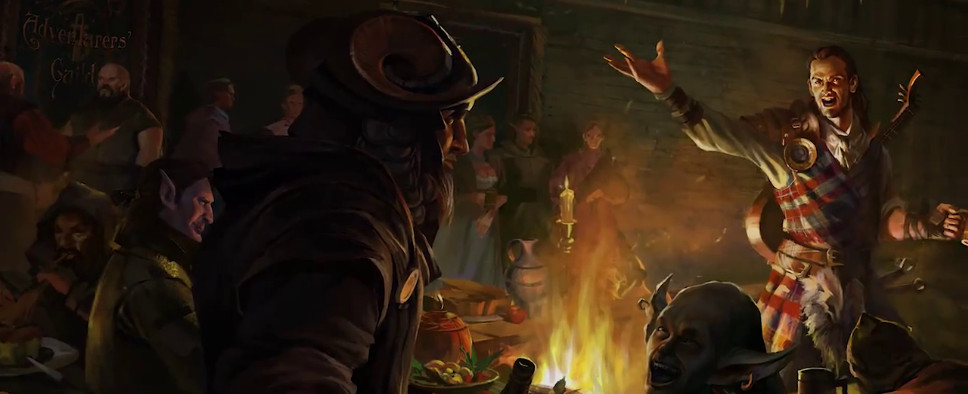The Bard's Tale IV Update #38
-
Category: News ArchiveHits: 1223

I joined inXile specifically to work on The Bard’s Tale IV, because the game means a lot to me. In a very real way, the original Bard’s Tale is responsible for starting me on the path to my Games career. I played the original games when they came out for the Apple IIgs and back then I was a broke kid and games were a thing friends shared, either by lending or, well, to be blunt, copying. If you had a computer with two drives it was your duty to make copies for your friends! That’s how I originally came across The Bard’s Tale – a friend gave me a copy they’d made, hand-written label and all. Most of the other games in that exchange were soon forgotten as I played The Bard's Tale.
Over the next months I slowly mapped it out, working with other friends to figure out the puzzles and the exploits to gain levels (Catacombs level 3, the 36 Ghouls & 69 Wights fight over and over was a revelation). Eventually I got to the final level of Mangar’s tower and found the final room. I knew Mangar was in there - it was the only room I hadn't entered in the only map I hadn't finished. Even after figuring out it was the last room it took me a solid week to work up the courage to actually go in. What would this most epic of fights be? How could my party survive? Had I leveled up enough? Would my spells even be effective?
When I finally worked up the courage and entered the room... nothing. Crash. The pirated copy of the game just crashed!
...
A lot of the code I’m working on is plumbing-level stuff – handling loading and in-memory storage of game data, building the components we’ll use to make the puzzles and traps in game (kind of like Lego-bricks for code), save and load of game data, etc. I also range up to do some UI implementation or bolt in the occasional player ability. Another aspect of my job is to act as a voice for the fans on the team – my experience as a player and fan of the original games is part of why they hired me. And so far, they’ve been great about listening to my suggestions and working to incorporate them. A few of those are in the works and today I'd like to introduce you to the first returning mechanic: grid movement.
RPGs back in the day were built on a grid, both because it was familiar (via table-top games like D&D) and because computers and software wouldn’t be able to handle proper 1st person free movement for another 10 years or so. Early RPGs like The Bard’s Tale not only used a grid, but the fact that it was a grid was often part of the puzzle of the game. You knew there were hidden areas on the map because it was a grid and your careful mapping (on graph paper, no less! No automappers yet) shows there’s a spot you can’t see how to get to. That’s an aspect we wanted to bring forward into this new Bard’s Tale game, so supporting a grid-based movement mode has always been a high priority.

